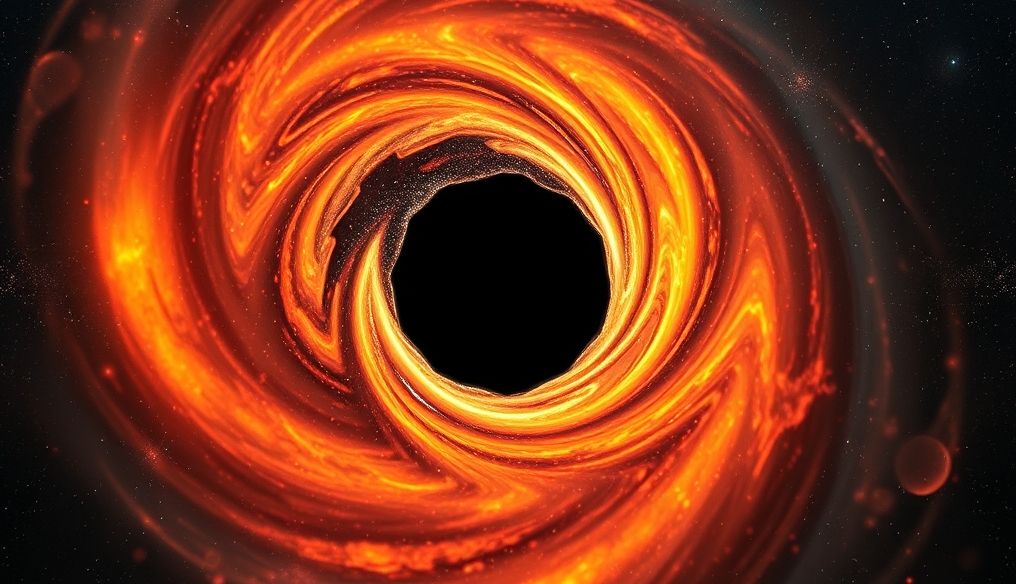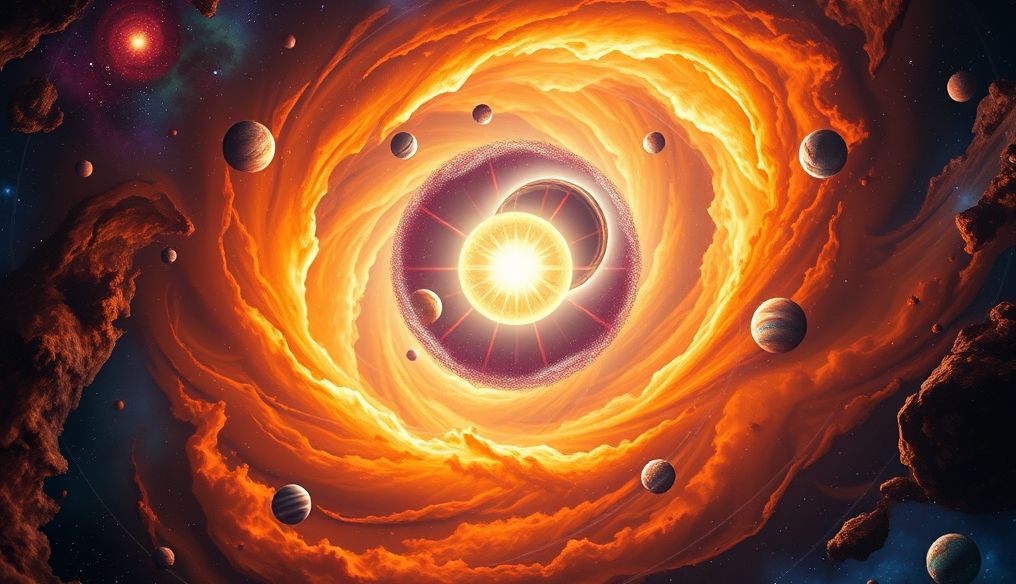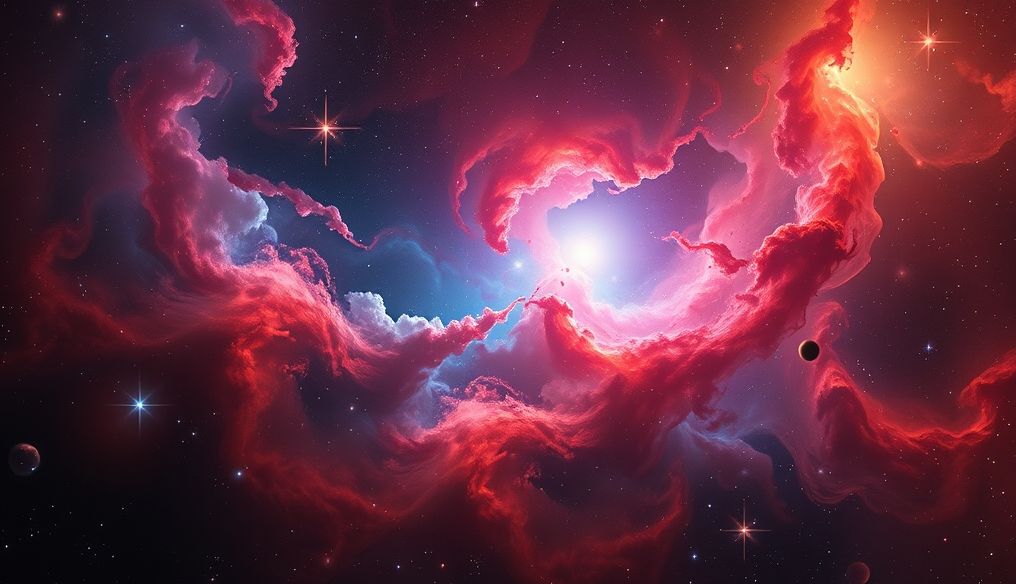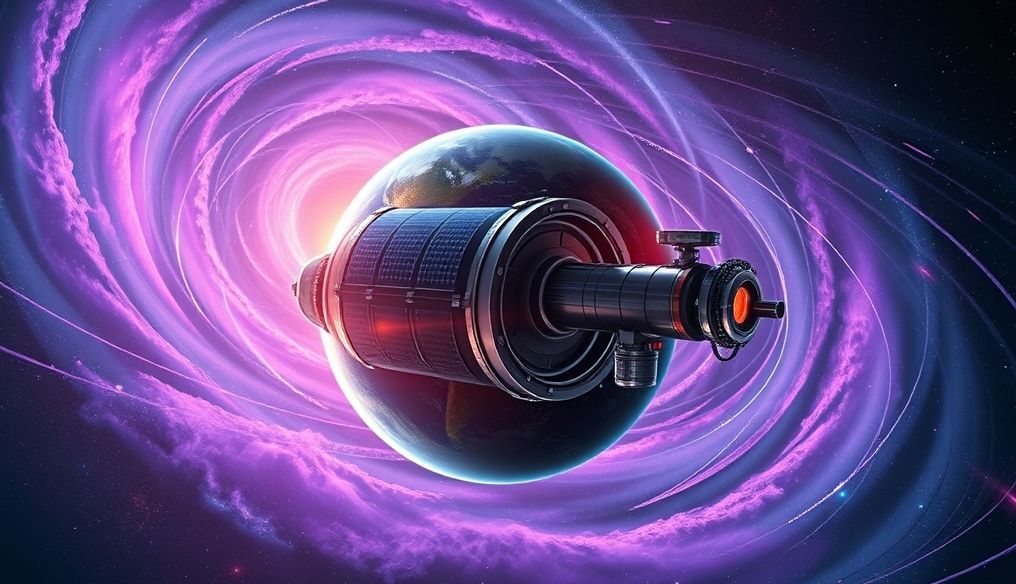Introduction to Black Holes: The Universe's Hidden Monsters
Black holes are among the most fascinating and mysterious astronomical phenomena in the universe. They are regions in space characterized by such strong gravity that nothing, not even light, can escape. This makes them directly invisible, adding to the difficulty of studying and understanding them. However, despite this challenge, scientists have been able to develop advanced theoretical models, as well as use sophisticated observation techniques, to uncover some of the secrets surrounding these enigmatic celestial bodies.
How Are Black Holes Formed?
Black holes are mostly formed from the death of massive stars. When a large star (about 10 to 20 times larger than our Sun) runs out of fuel, it collapses under its own gravity. This process leads to a massive explosion called a supernova. After the explosion, if the remaining mass of the star is large enough, it will continue to collapse until all the matter is concentrated into a single, very small point called a singularity. Around this point, a region called the event horizon is formed, which is the boundary beyond which nothing, not even light, can escape its gravity.
Types of Black Holes
There are different types of black holes, varying in mass and size:
- Stellar Black Holes: Formed from the collapse of massive stars, their mass ranges from 10 to 100 times the mass of the Sun.
- Supermassive Black Holes: Located in the centers of most galaxies, their mass ranges from millions to billions of times the mass of the Sun. Their exact origin is still a mystery, but it is believed that they are formed from the merger of many smaller black holes, or from the collapse of massive gas clouds.
- Intermediate-Mass Black Holes: A less common type, their mass ranges between 100 and 100,000 times the mass of the Sun. A few have been discovered, and they are believed to be "seeds" for supermassive black holes.
- Primordial Black Holes: Hypothetical black holes formed very early in the universe, perhaps shortly after the Big Bang. Their mass can be very small, and they may play a role in explaining dark matter.
What's Inside a Black Hole?
This is the question that fascinates scientists and philosophers alike. The answer is not simple, because our known physics breaks down inside a black hole.
The Singularity
At the center of a black hole is the singularity, a point with infinite density and zero volume. At this point, the laws of physics as we know them cease to apply. We cannot describe exactly what happens at this point using our current theories.
The Event Horizon
The event horizon is the boundary that defines the region of the black hole. Anything that crosses this boundary cannot escape, even light. The event horizon is considered a "point of no return."
Spacetime Distortion
Inside a black hole, spacetime (the fabric that connects space and time) is severely distorted. Einstein's theory of general relativity predicts that the strong gravity of a black hole causes time to slow down significantly near the event horizon. To an external observer, time would appear to stop completely as an object approaches the event horizon.
How Do We Detect Black Holes?
Since black holes do not emit any light, how can we detect them? There are several ways:
- Gravitational Effects on Surrounding Objects: We can detect black holes by observing the effect of their gravity on surrounding stars and gases. For example, if a star is orbiting an invisible point, it may be evidence of a black hole.
- X-rays: When black holes swallow matter, they heat it to very high temperatures, resulting in the emission of strong X-rays. Space-based detectors can observe these X-rays and locate black holes.
- Gravitational Lensing: Black holes can distort the light coming from distant objects, creating an effect called gravitational lensing. Scientists can use this effect to study black holes and determine their mass.
- Gravitational Waves: When black holes merge, they send ripples in spacetime called gravitational waves. Detectors like LIGO and Virgo can observe these waves and confirm the existence of black holes.
Black Holes and the Universe: Their Role and Impact
Black holes play an important role in the evolution of the universe. Supermassive black holes at the centers of galaxies are believed to influence the growth and evolution of their host galaxies. They may also be responsible for some violent astronomical phenomena, such as relativistic jets emanating from the centers of some galaxies.
Impact of Black Holes on Galaxies
Supermassive black holes interact with the gas and dust in the center of the galaxy. These interactions can heat and ionize the gas, affecting star formation. In some cases, black holes can release enormous amounts of energy into space, completely stopping star formation.
Relativistic Jets
Relativistic jets are streams of matter ejected from the poles of a black hole at speeds approaching the speed of light. The origin of these jets is still a mystery, but it is believed that they are related to the strong magnetic field of the black hole. Relativistic jets can affect the environment surrounding the black hole and may play a role in transferring energy from the center of the galaxy to the outer regions.
Frequently Asked Questions About Black Holes
- Can a black hole swallow the Earth? No, the Earth is not in danger of being swallowed by a black hole. The nearest known black hole is thousands of light-years away.
- Can we travel through black holes? This is a theoretical question. Although some physical theories allow for the existence of "wormholes" that connect different regions of spacetime, there is no evidence of their existence, and even if they did exist, it is unlikely that they would be usable for travel.
- What happens if you fall into a black hole? If you fall into a black hole, you will be stretched and torn apart by the enormous tidal forces. This process is called "spaghettification."
The Future of Black Hole Research
Black holes remain an active topic of scientific research. Scientists are seeking to better understand how black holes form, what happens inside them, and how they affect the universe. With the development of technology, scientists will be able to conduct more accurate observations, test new theories, and uncover more of the secrets surrounding these enigmatic celestial bodies.
Future Challenges
Future challenges in black hole research include:
- Developing more accurate theoretical models to describe what happens inside black holes.
- Improving observation techniques to detect more black holes, especially intermediate-mass black holes.
- Studying the impact of black holes on the evolution of galaxies.
- Searching for evidence of wormholes.
Understanding black holes is not just a scientific endeavor, but also a philosophical one. It pushes us to think about the nature of spacetime, the limits of knowledge, and our place in the universe.




